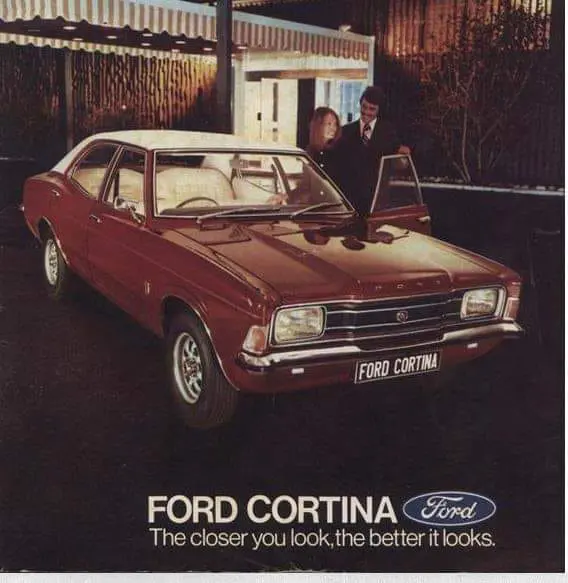THE FORD CORTINA XLE – THE ULTIMATE MK. III?
28 December 2022
At first sight, this is the perfect Cortina for all drivers who regarded a Jason King moustache as the height of fashion and the Berni Inn as the pinnacle of haute cuisine. It certainly appears to be a prime example of a facelifted Cortina XL Mk. III but then you notice the white reflectors on the front bumper, different hubcaps, a ‘V6’ shield on the front wings and the ‘Big 6’ badges. This is not a Dagenham Cortina but the XLE that hailed from Ford’s plant in South Africa.
South African (SA) Fords commenced in 1924 with locally assembled Model Ts built in a disused wool shed in Port Elizabeth. 38 years later, the Consul-Cortina was poised to become the most popular car range in the history of the South African motor industry. Price was one key to its success; at R1365 it was sufficiently inexpensive to appeal to VW Beetle owners.

Late 1971 saw the introduction of the South African-built Mk. III, which, unlike its UK parent model, was eventually available with a 2.5 litre and 3 Litre six-cylinder forms. For 1974 Ford SA introduced the XLE as their flagship Cortina, with a leather covered steering wheel, cut-pile carpets and illuminated glove box as standard. The options included an eight-track cartridge player and even air-conditioning.
At R2,995, the XLE was cheaper than the SA version of the Triumph 2500 as well as a more convincing business transport than the Leyland Marina 2600. In 1975, Ford offered the XLE LDO – “Luxury, Décor, Option” - with automatic transmission and ‘Beaumont’ cloth trim as standard, as befitting a car for the suburban jet set.
The 1,000,000th Ford vehicle made in South Africa was an XLE, which left the factory in September 1976. By 1978, the company had built its 100, 000th Cortina, in Mk. IV guise. The last Mk.V saloons were replaced by an SA Sierra in 1983 after over 303,000 Cortinas, although sales of the P100 Pick-Up continued until 1988.
A small number of XLEs have made their way to the UK, which begs the question – could Ford GB have marketed a Cortina ‘3000E’ Mk. III? On paper it is a tempting idea, but 1973 was the year of the OPEC Oil Crisis and therefore not a promising time to launch a V6-enhine family saloon. In addition, the fairly limited sales enjoyed by the 2.3-litre Mk. IVs suggests that UK Cortina buyers were unwilling to contemplate engines larger than two litres.
That said, who would not want an XLE LDO in all its vinyl-roofed glory? As the advertisement stated – “The Closer You Look The Better It Looks.”
